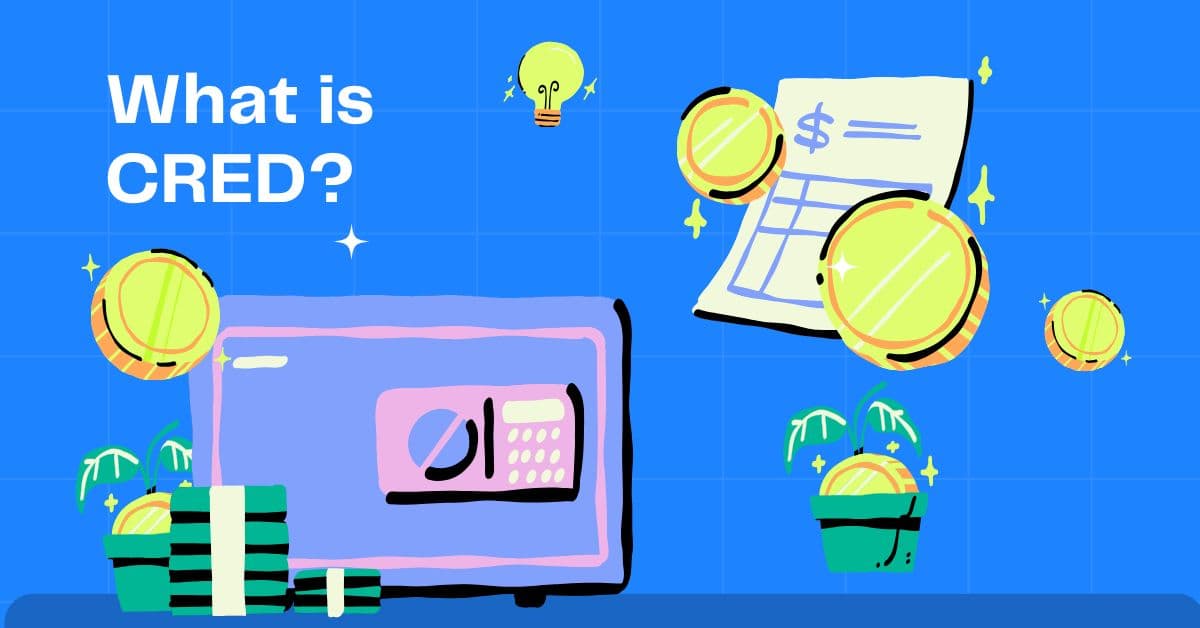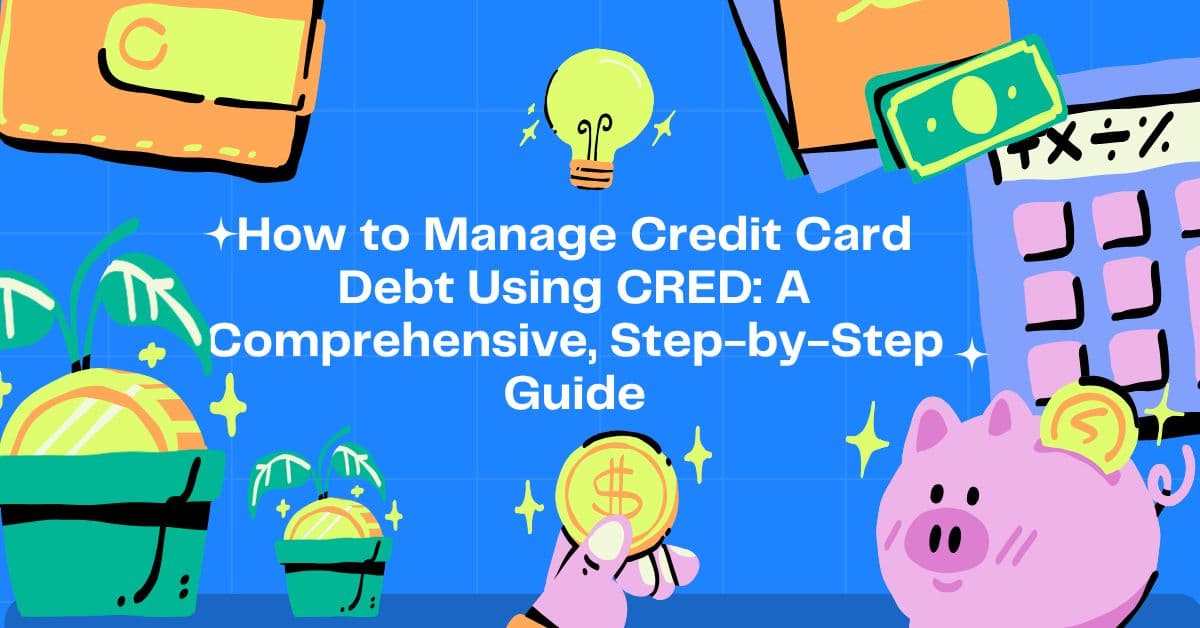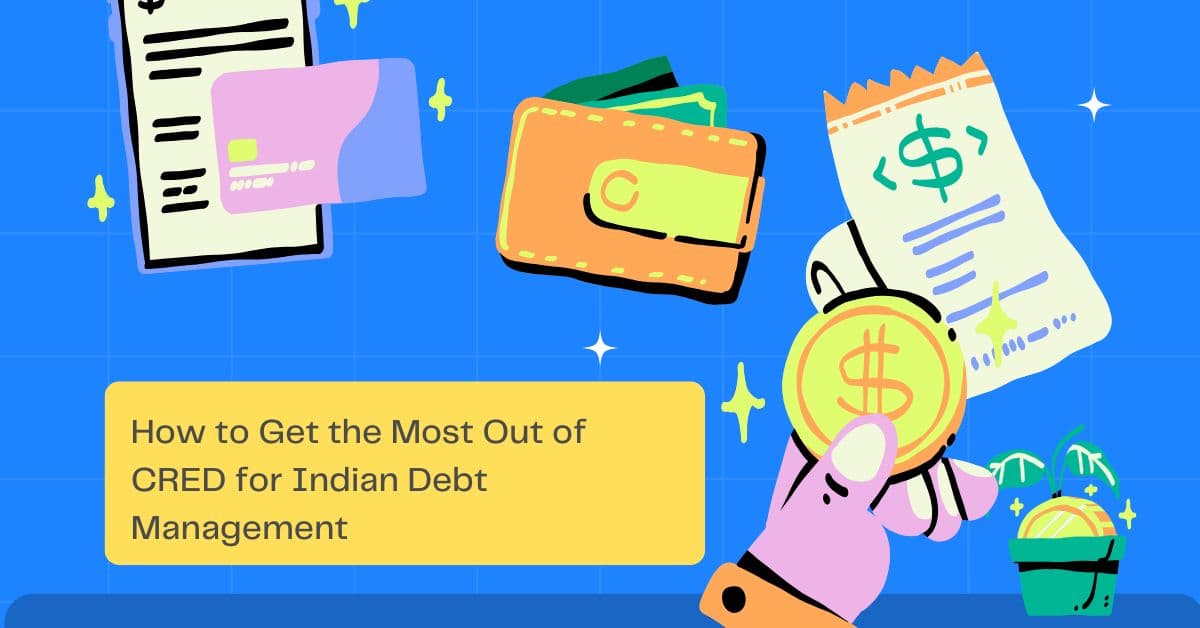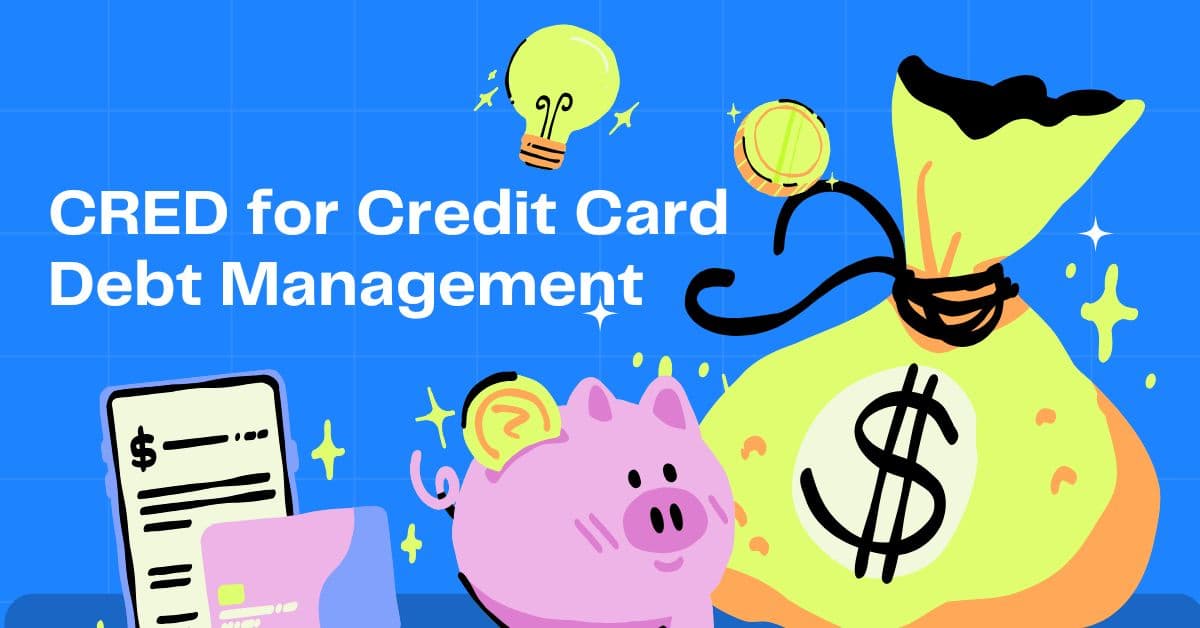CRED for Credit Card Debt Management: In India, where the ease of using plastic money frequently results in overspending, credit card debt is becoming a bigger problem. Dues management has become a crucial skill as household debt increased from ₹9,017 in 2015 to ₹16,239 in 2019 (according to industry estimates) and credit card usage increased in urban and semi-urban regions. If payments are delayed or improperly handled, high interest rates—which can occasionally be as high as 36-48% yearly—can keep consumers in a debt cycle. Thankfully, a clever answer is provided by CRED, a financial platform that was introduced in 2018. CRED is well-known for rewarding on-time credit card payments and offers resources to make managing debt easier and transforming financial stress into a chance for personal development.
What is CRED?
Established by Kunal Shah with the goal of rewarding financial discipline, CRED is a members-only app for creditworthy people in India. It positions itself as an exclusive forum for those who are dedicated to excellent credit practices by requiring a credit score of 750 or better to join (by CIBIL, Experian, or CRIF). CRED, which started off as a bill payment software, has developed into a financial companion with features like credit score tracking, expenditure analytics, payment reminders, and credit line access. With more than 14 million customers as of March 29, 2025, it accepts cards from well-known issuers including American Express, HDFC, SBI, ICICI, Axis, and Kotak.

CRED ensures safe, quick transactions by integrating with India’s digital payment infrastructure, which includes UPI and the Bharat Bill Payment System (BBPS). Its combination of automation, data, and rewards for debt management makes it an effective ally for Indians trying to effectively pay off credit card debt.
Why CRED Is Ideal for Indian Credit Card Debt Management
By 2025, there will be over 90 million credit cards in use in India because to e-commerce, travel benefits, and cashback incentives. However, many people incur debt as a result of unanticipated EMIs, overspending during holidays (such as Diwali or Big Billion Days), or just losing track of several cards. CRED is the perfect instrument for handling this debt for the following reasons:
- Timely Payment Automation: CRED’s auto-pay choices and reminders help you avoid late penalties and credit score damage.
- Centralised Control: Avoid the headache of switching between bank portals by managing several cards in a single app.
- Transparency in Spending: Understanding your spending patterns enables you to spot and eliminate unnecessary expenditure.
- Reward-Driven Motivation: Convert discipline into observable advantages like rebates or discounts by earning CRED coins for each payment.
- Credit Health Focus: Rebuilding credit is essential for negotiating better terms with banks, and free score tracking may assist.
With its user-friendly design and India-centric features, CRED stands out in a nation where digital payments are prevalent and financial literacy is still developing (UPI handled 14.4 billion transactions in February 2025 alone).
How to Manage Credit Card Debt Using CRED: A Comprehensive, Step-by-Step Guide
Are you prepared to work with CRED to manage your credit card debt? To configure and tailor the app to your financial requirements, adhere to these comprehensive steps:

Step 1: Link Your Cards and Join CRED
- Get CRED from the Apple App Store or Google Play Store.
- Enter your complete name and Indian mobile number to register.
- Your credit score (750+ needed) will be checked by CRED. Link your credit cards (up to 10) if authorised by inputting your card information and verifying with a ₹1 IMPS/UPI transaction.
- HDFC, SBI, ICICI, Axis, Kotak, RBL, and more issuers are supported.
Step 2: Assess Your Debt Burden
- To view all related cards, select the “Cards” option.
- Note the interest rate, minimum amount owed, due date, and outstanding balance for each card. For instance: ₹20,000 on Card A at 36% and ₹15,000 on Card B at 24%.
- You may prioritise repayment and see your whole debt with this snapshot.
Step 3: Turn on Auto-Pay and Payment Reminders
- To schedule payments, create reminders in the app three to five days before to each due date.
- If your bank account is regularly filled, choose auto-debit to ensure that payments are sent automatically.
Step 4: Select a Plan for Paying Off Debt
- Avalanche Method: To reduce interest expenses, pay the minimum amount due on all cards and then concentrate any remaining money on the card with the highest interest rate (for example, 36%).
- The snowball method involves paying off the smallest sum first for immediate gains before moving on to bigger obligations. To help you make a decision, CRED’s statements emphasise rates and balances.
Step 5: Use CRED Protect to Examine Spending
- Examine thorough spending breakdowns under “CRED Protect” (e.g., ₹3,000 on shopping, ₹5,000 on eating).
- Find areas for savings, such as cutting back on weekend excursions or OTT subscriptions, and use the money saved for debt payback.
Step 6: Pay Strategically
- Navigate to “Cards,” pick a card, then input the entire or minimum amount to be paid.
- Pay via a net banking account, debit card, or UPI; it clears in two days.
- Earn the same number of CRED coins as the rupees you paid (for example, ₹10,000 payment = 10,000 coins).
Step 7: Examine Opportunities for Balance Transfers
- Verify whether your bank (via CRED partners) allows balance transfers so that you can transfer high-interest debt (like 36%), to a card with a reduced interest rate (18%).
- Examine the terms to prevent any unexpected costs or brief grace periods.
Step 8: Consolidate Debt Using CRED Cash
- Apply for CRED Cash, a pre-approved credit line up to 5,00,000 with interest rates between 12 and 15 percent (far cheaper than credit card rates) if you are short on cash.
- Repay CRED Cash over a period of three to twelve months after using it to settle high-interest debt.
Step 9: Utilise Incentives Sensibly
- Exchange CRED coins for goods, discounts (like ₹1,000 off on Amazon), or cashback (₹1 per 100 coins).
Instead of indulging, use this funds to pay off debt.
Step 10: Monitor and Improve Your Credit Rating
- Check your score on the app once a month (updated by CRIF, Experian, or CIBIL).
- Making regular payments through CRED raises your credit score, which opens up better lending possibilities or reduced interest rates for managing your debt in the future.
Advantages of Debt Management with CRED
- Efficiency: Save time and effort by managing all of your cards in one location.
- Cost savings: Making on-time payments lowers interest and prevents late penalties.
- Behavioural Shift: Repayment of debt feels good because rewards encourage discipline.
- Debt Reduction: Tools and insights help you reach debt zero more quickly.
- Credit Improvement: When applying for loans or refinancing, a better score increases one’s financial trustworthiness.
Success Stories from Real Life
Shahid’s Debt Victory of ₹50,000
Shahid, a 29-year-old Bangalore-based IT engineer, owing ₹50,000 on two cards, including ₹20,000 at 24% and ₹30,000 at 36%. His curiosity had skyrocketed owing to missed deadlines. Applying CRED:
- He set reminders and connected the two cards.
- Made monthly payments of ₹5,000 on the 36% card (avalanche technique) and a minimum of ₹800 on the 24% card.
- Reduce eating expenses by ₹2,000 using CRED insights.
- Added ₹500 in reward to repayments after redeeming 5,000 coins.
- Increased his score from 720 to 780 by clearing ₹30,000 in six months and ₹20,000 in four months.
Ayesha’s Relief from EMI
A 34-year-old Pune teacher named Ayesha owed ₹1,00,000 on a furniture instalment loan with 40% interest. Using CRED:
- She utilised CRED Cash (₹50,000 at 14%) to cut the debt in half and made minimal payments.
- 10,000 coins were exchanged for ₹1,000 in cashback, which was then applied to repayments.
- saved ₹15,000 in interest by paying down the remaining balance in 8 months.
How to Get the Most Out of CRED for Indian Debt Management

- Pay Early: To prevent interest from accruing, pay invoices as soon as they are generated.
- Rate Negotiation: Ask banks for reduced rates by using an improved score (monitored by CRED).
- Supplement Income: For quicker payback, combine CRED funds with side jobs like freelancing.
- Avoid Festive Traps: To avoid taking on more debt during sales, use CRED insights.
- Family Alignment: For united finances, share CRED’s advantages with your parents or spouse.
- Budget Integration: For comprehensive planning, use CRED data with programs like Moneycontrol.
Overcoming Typical Obstacles
- Problem: Not remembering to pay even after being reminded.
Solution: Pay immediately when a bill is generated or enable auto-pay. - Problem: The overwhelming amount of debt is the challenge.
Solution: Divide it into more manageable objectives and combine them using CRED Cash. - Problem: Give in to temptation.
Solution: Use all of the cashback towards debt repayment rather than lifestyle enhancements. - Problem: Confusion between several cards is the challenge.
Solution: For clarity, label cards with CRED (such as “HDFC Shopping”).
Why CRED Meets India’s Needs for Debt Management
Risks accompany India’s credit card boom: according to RBI data, 20% of users miss payments each year. CRED responds to this by taking a digital-first stance, utilising UPI for accessibility and BBPS for quick payments. CRED connects modern convenience and financial discipline for rural customers adopting digital banking and urban millennials managing EMIs.
With CRED, Begin Your Debt-Free Journey Now
Now is the time to manage your credit card debt:
- Link your cards after downloading CRED.
- A week from March 29, 2025, on April 5, 2025, set your first reminder.
- Start paying more wisely by reviewing your obligations.
CRED makes managing debt a pleasurable experience. Give this guidance to family members or friends who are going through comparable difficulties. With CRED, you’re creating a future free of debt, not just paying your bills.
How to Reduce Credit Card Debt in India Fast: A Step-by-step Guide

